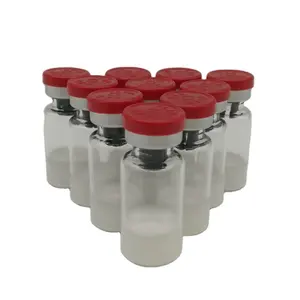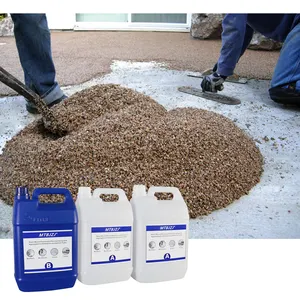Phổ biến trong ngành của bạn

Rau quả công cụ khoai tây cắt cầm tay thực phẩm Chopper ABS nhựa đa chức năng thực phẩm màu xanh lá cây Slicer Rau cắt Chop
68.729 ₫ - 75.856 ₫
Đơn hàng tối thiểu: 100 Bộ
Vận chuyển mỗi chiếc: 60.074 ₫


Phụ Kiện Nhà Bếp Hộ Gia Đình Đa Chức Năng Rau Slicer Mandoline Thực Phẩm Slicer Hành Tây Cutter
142.039 ₫ - 147.893 ₫
Đơn hàng tối thiểu: 2000 Bộ
Vận chuyển mỗi chiếc: 6.363.719 ₫


Top người bán nhà bếp Trái cây và rau công cụ Rau cắt đa chức năng thực phẩm Slicer khoai tây rau cắt Chop
68.729 ₫ - 75.856 ₫
Đơn hàng tối thiểu: 100 Bộ
Vận chuyển mỗi chiếc: 50.656 ₫


Ánh nắng mặt trời làm vườn nhiệm vụ nặng nề với gỉ bằng chứng lưỡi thép không gỉ tốt nhất bỏ qua pruner vườn kéo
Sẵn sàng vận chuyển
65.420 ₫ - 68.729 ₫
Đơn hàng tối thiểu: 2 Đơn vị
Vận chuyển mỗi chiếc: 346.187 ₫


DTWA1-0030 phổ biến chất lượng cao Powered cắt tỉa shear li-pin sạc không dây cắt tỉa Shears
585.463 ₫ - 636.372 ₫
Đơn hàng tối thiểu: 1 Bộ
Vận chuyển mỗi chiếc: 586.481 ₫



Tijeras Chất lượng cao tùy chỉnh hộ gia đình thép không gỉ Cắt kéo cắt
9.419 ₫ - 11.455 ₫
Đơn hàng tối thiểu: 3600 Cái

Kéo Cắt Tỉa Cầm Tay Chuyên Nghiệp, Dụng Cụ Làm Vườn, Làm Hàng Rào, Gia Dụng
77.383 ₫ - 96.984 ₫
Đơn hàng tối thiểu: 76 Cái

Kéo May May Chất Lượng Tốt Nhất Quần Áo Cắt 8.5 Inch Hợp Kim Titan Thép Không Gỉ Hộ Gia Đình Thợ May Cắt Kéo
Sẵn sàng vận chuyển
38.183 ₫ - 45.819 ₫
Đơn hàng tối thiểu: 100 Cái
Vận chuyển mỗi chiếc: 13.237 ₫

Kéo Gia Dụng Từ Tính Bằng Thép Không Gỉ
Sẵn sàng vận chuyển
25.201 ₫ - 30.292 ₫
Đơn hàng tối thiểu: 2 Cái
Vận chuyển mỗi chiếc: 172.585 ₫

Hộ Gia Đình Kéo 7 "Mềm Grip Xử Lý Văn Phòng Kéo Titan Lớp Phủ Lưỡi Thực Phẩm Kéo Kéo Nhà Bếp Kéo Sct1507
11.455 ₫ - 15.273 ₫
Đơn hàng tối thiểu: 2 Cái

Nến Wick Tông Đơ Nến Snuffer & Candle Accessory Set-Rose Gold Thép Không Gỉ Hộ Gia Đình Kéo Vải/May Shears OEM
106.911 ₫ - 178.185 ₫
Đơn hàng tối thiểu: 50 Cái

Sắc nét kéo thợ may cắt giấy hộ gia đình thép không gỉ kéo màu đỏ đa chức năng kéo dụng cụ cầm tay
6.364 ₫ - 10.182 ₫
Đơn hàng tối thiểu: 100 Cái


Chất lượng cao kéo nhà bếp bằng thép không gỉ của hộ gia đình sử dụng cắt
Sẵn sàng vận chuyển
17.564 ₫ - 21.637 ₫
Đơn hàng tối thiểu: 1 Cái
Vận chuyển mỗi chiếc: 135.420 ₫

Hộ gia đình kéo thực tế 7 "cao su grip xử lý văn phòng kéo thuận tay trái băng kéo cắt kéo
Sẵn sàng vận chuyển
4.073 ₫ - 7.382 ₫
Đơn hàng tối thiểu: 360 Cái
Vận chuyển mỗi chiếc: 6.364 ₫

Xu hướng sản phẩm 2023 New arrivals hộ gia đình thép không gỉ nhà bếp Shears với từ tủ lạnh vỏ bọc nhà bếp cắt kéo
24.183 ₫ - 42.001 ₫
Đơn hàng tối thiểu: 3000 Cái

Hot Bán Thiết Kế Lạ Mắt Tùy Chỉnh Thêu Cắt Kéo Hộ Gia Đình Cắt Vải Bán Buôn Với Số Lượng Lớn
25.455 ₫ - 38.183 ₫
Đơn hàng tối thiểu: 1 Cái

Kéo Gốm Gia Dụng, Kéo Sắc Nét & Kéo Cắt Gốm Chức Năng
73.820 ₫ - 76.365 ₫
Đơn hàng tối thiểu: 10000 Cái

Đa Mục Đích Cắt Kéo Đa Chức Năng Nhà Bếp Cắt Kéo Nhiệm Vụ Nặng Nề Hộ Gia Đình Kéo
84.002 ₫
Đơn hàng tối thiểu: 3000 Cái

Dương giang Nhà Sản Xuất Chất Lượng Cao Đa Mục Đích Hộ Gia Đình Kéo 8 inch Thép Không Gỉ Bếp Cắt Kéo
10.182 ₫ - 20.364 ₫
Đơn hàng tối thiểu: 4800 Cái

Thép không gỉ chống trượt xử lý hộ gia đình gà kéo nhà bếp kéo sắc nét đa mục đích cắt
Sẵn sàng vận chuyển
6.364 ₫ - 6.619 ₫
Đơn hàng tối thiểu: 50 Cái
Vận chuyển mỗi chiếc: 39.710 ₫

Heavy Duty Chuyên Nghiệp Thợ May Kéo Trang Phục Vải Kéo May Hộ Gia Đình Công Nghiệp Kéo OEM Cắt Shears
25.455 ₫ - 63.638 ₫
Đơn hàng tối thiểu: 1 Cái

Bán Sỉ Đầu Lớn Bằng Thép Cacbon Có Tay Cầm Màu Đen Kéo Thợ May Kéo Vải Gia Dụng Kéo Sắc Nhọn Vải/Kéo May
9.673 ₫
Đơn hàng tối thiểu: 10 Cái

Thép không gỉ hoa nghệ thuật kéo ghép cây ăn quả vườn cắt tỉa công cụ gia đình cắm hoa cắt tỉa
15.273 ₫ - 30.546 ₫
Đơn hàng tối thiểu: 50 Cái
Vận chuyển mỗi chiếc: 51.419 ₫

Kéo Cắt Tỉa Cây Ăn Quả Hình Mỏ Bằng Thép Không Gỉ, Kéo Cắt Tỉa Cây Ăn Quả, Tay Cầm Màu Đỏ, Kéo Làm Vườn Gia Dụng Mạnh Mẽ
20.364 ₫ - 76.365 ₫
Đơn hàng tối thiểu: 100 Cái

Greatstar 10 "Đa Chức Năng Hộ Gia Đình Thép Không Gỉ Kéo Nhà Bếp Kéo Cắt Với Vỏ Bọc Bảo Vệ Thịt Gia Dụng Sci
86.038 ₫ - 91.384 ₫
Đơn hàng tối thiểu: 100 Cái

8 Inch Tấm Kim Loại Cắt Đa Chức Năng Tin Snips Thẳng Uốn Cong Blade Cutter Tay Hộ Gia Đình Kéo Công Cụ Cắt Kéo
Sẵn sàng vận chuyển
58.547 ₫
Đơn hàng tối thiểu: 2 Cái
Vận chuyển mỗi chiếc: 157.821 ₫

Hợp Kim Khuỷu Tay Thép Không Gỉ Kéo Thảm Da Vải Cắt Hộ Gia Đình Cắt Kéo Cong Lưỡi Biến Dạng Kéo
36.146 ₫ - 40.728 ₫
Đơn hàng tối thiểu: 36 Cái

Sk5 chuyên nghiệp không dây pin cây pruner chi nhánh cắt tỉa cắt cho hộ gia đình vườn cắt Lithium
636.372 ₫ - 738.192 ₫
Đơn hàng tối thiểu: 100 Cái

Bán buôn tufting kéo không trượt Duckbill Shears TRIM tóc bóng Shears hộ gia đình len Shears cho may
148.657 ₫ - 149.675 ₫
Đơn hàng tối thiểu: 2 Cái
Vận chuyển mỗi chiếc: 254.549 ₫

Cho Hoa Cắt Tool Set Carbon Steel Hộ Gia Đình Bonsai Công Cụ Kéo Làm Vườn Chi Nhánh Shears
124.729 ₫ - 318.186 ₫
Đơn hàng tối thiểu: 50 Cái

Lưỡi Dao Thép Không Gỉ Chịu Lực 5 Trong Một Gia Dụng Kéo Cắt Nhà Bếp Và Kéo Hải Sản
24.946 ₫ - 38.692 ₫
Đơn hàng tối thiểu: 1000 Cái


6 "đa năng thép không gỉ hộ gia đình Kéo cắt giấy gia đình kéo màu tím kéo tay công cụ kéo
8.910 ₫ - 12.728 ₫
Đơn hàng tối thiểu: 5000 Bộ
Vận chuyển mỗi chiếc: 3.055 ₫

Chất lượng cao thép không gỉ màu đen xử lý kéo nhà bếp kéo hộ gia đình cho nhà bếp phụ trợ thực phẩm kéo
10.692 ₫ - 19.855 ₫
Đơn hàng tối thiểu: 10 Cái

Hộ gia đình vườn kéo và cây cảnh kim loại hoa kéo
56.001 ₫ - 61.092 ₫
Đơn hàng tối thiểu: 2 Cái
Vận chuyển mỗi chiếc: 63.638 ₫

Gia đình bỏ qua kéo chọn trái cây cắt cành Kéo cắt tỉa thép
78.656 ₫ - 109.202 ₫
Đơn hàng tối thiểu: 200 Cái

Kéo Cắt Bếp Đa Năng Bằng Thép Không Gỉ, Có Vỏ Từ Tính
24.183 ₫ - 42.001 ₫
Đơn hàng tối thiểu: 3000 Cái
Các danh mục hàng đầu
Giới thiệu về kéo gia dụng
Mua nhiều loại kéo gia dụng. trên cửa hàng trực tuyến hàng đầu, Alibaba.com. Những sản phẩm bổ dưỡng mạnh mẽ này rất lý tưởng để sử dụng trong tất cả các mùa. Những kéo gia dụng chất lượng cao. có thể áp dụng rộng rãi và thích hợp cho việc sử dụng trong nhà và ngoài trời.
Các chất dinh dưỡng trong những kéo gia dụng nổi bật này. hỗ trợ cải thiện chất lượng đất; do đó khả năng giữ nước tăng lên. Những sản phẩm này rất giàu hóa chất, giúp vi khuẩn phát triển mạnh; do đó, cây trồng có thể tiếp cận các chất dinh dưỡng cần thiết cho sự phát triển. Tương tự như vậy, những sản phẩm tốt cho sức khỏe này được làm từ các thành phần thân thiện với môi trường để thúc đẩy đa dạng sinh học của các loài bằng cách ngăn ngừa ô nhiễm môi trường.
Khi nói đến tính bền vững, không đâu xa hơn những sản phẩm cao cấp này từ Alibaba.com. Những kéo gia dụng có thể dự đoán được. có thể được tùy chỉnh để phù hợp với đất của cây trồng, do đó tạo ra các bãi trồng hoàn hảo. Các sản phẩm đáng tin cậy và hoạt động nhanh trên cây trồng; do đó, chúng có thể được sử dụng trên đất nghèo dinh dưỡng mà vẫn thu được sản lượng lớn. Những sản phẩm đích thực này rất dễ sử dụng và áp dụng cho tất cả các loại cây trồng trong nhà và ngoài trời. Các kích thích tố tạo rễ trong các sản phẩm này hoạt động tích cực và sôi động, do đó thúc đẩy sự phát triển hoàn hảo ở thực vật. Các sản phẩm chứa các thành phần tự nhiên giúp cây trồng và cây trồng nuôi dưỡng bên trên và bên dưới đất.
Alibaba.com cung cấp rất nhiều sản phẩm tuyệt vời kéo gia dụng. tùy chọn cho các khách hàng khác nhau của họ. Các nhà sản xuất và nhà cung cấp được chứng nhận cung cấp các sản phẩm cập nhật đang hot trên thị trường hiện nay. Những sản phẩm này được sản xuất cho những người làm vườn và nông dân, những người tự hào về việc sản xuất ra năng suất chất lượng cao.
Các chất dinh dưỡng trong những kéo gia dụng nổi bật này. hỗ trợ cải thiện chất lượng đất; do đó khả năng giữ nước tăng lên. Những sản phẩm này rất giàu hóa chất, giúp vi khuẩn phát triển mạnh; do đó, cây trồng có thể tiếp cận các chất dinh dưỡng cần thiết cho sự phát triển. Tương tự như vậy, những sản phẩm tốt cho sức khỏe này được làm từ các thành phần thân thiện với môi trường để thúc đẩy đa dạng sinh học của các loài bằng cách ngăn ngừa ô nhiễm môi trường.
Khi nói đến tính bền vững, không đâu xa hơn những sản phẩm cao cấp này từ Alibaba.com. Những kéo gia dụng có thể dự đoán được. có thể được tùy chỉnh để phù hợp với đất của cây trồng, do đó tạo ra các bãi trồng hoàn hảo. Các sản phẩm đáng tin cậy và hoạt động nhanh trên cây trồng; do đó, chúng có thể được sử dụng trên đất nghèo dinh dưỡng mà vẫn thu được sản lượng lớn. Những sản phẩm đích thực này rất dễ sử dụng và áp dụng cho tất cả các loại cây trồng trong nhà và ngoài trời. Các kích thích tố tạo rễ trong các sản phẩm này hoạt động tích cực và sôi động, do đó thúc đẩy sự phát triển hoàn hảo ở thực vật. Các sản phẩm chứa các thành phần tự nhiên giúp cây trồng và cây trồng nuôi dưỡng bên trên và bên dưới đất.
Alibaba.com cung cấp rất nhiều sản phẩm tuyệt vời kéo gia dụng. tùy chọn cho các khách hàng khác nhau của họ. Các nhà sản xuất và nhà cung cấp được chứng nhận cung cấp các sản phẩm cập nhật đang hot trên thị trường hiện nay. Những sản phẩm này được sản xuất cho những người làm vườn và nông dân, những người tự hào về việc sản xuất ra năng suất chất lượng cao.






















